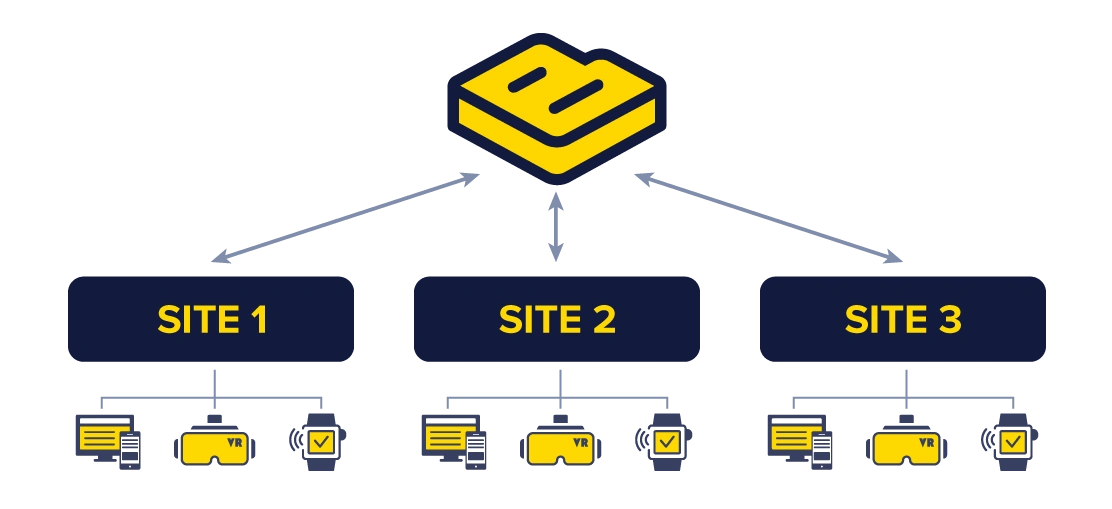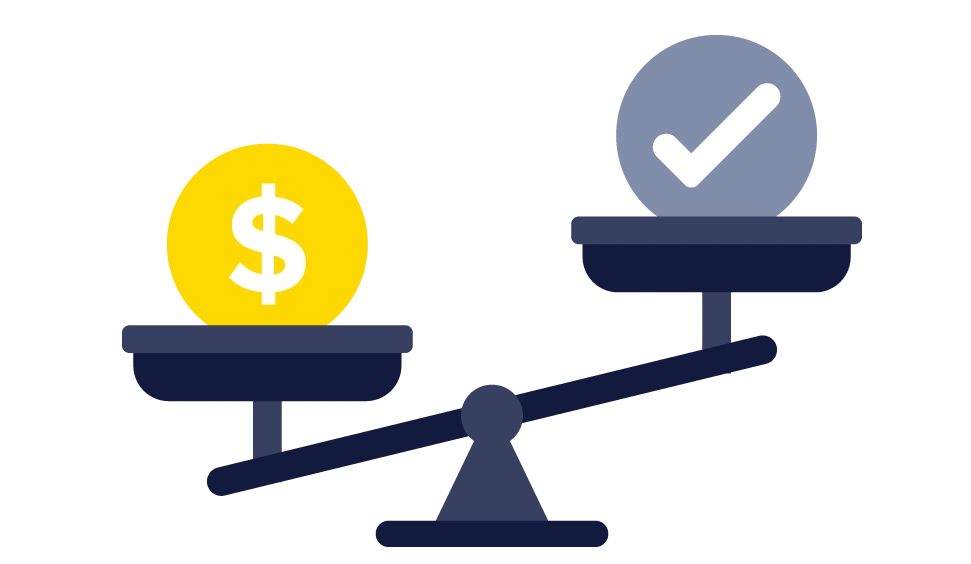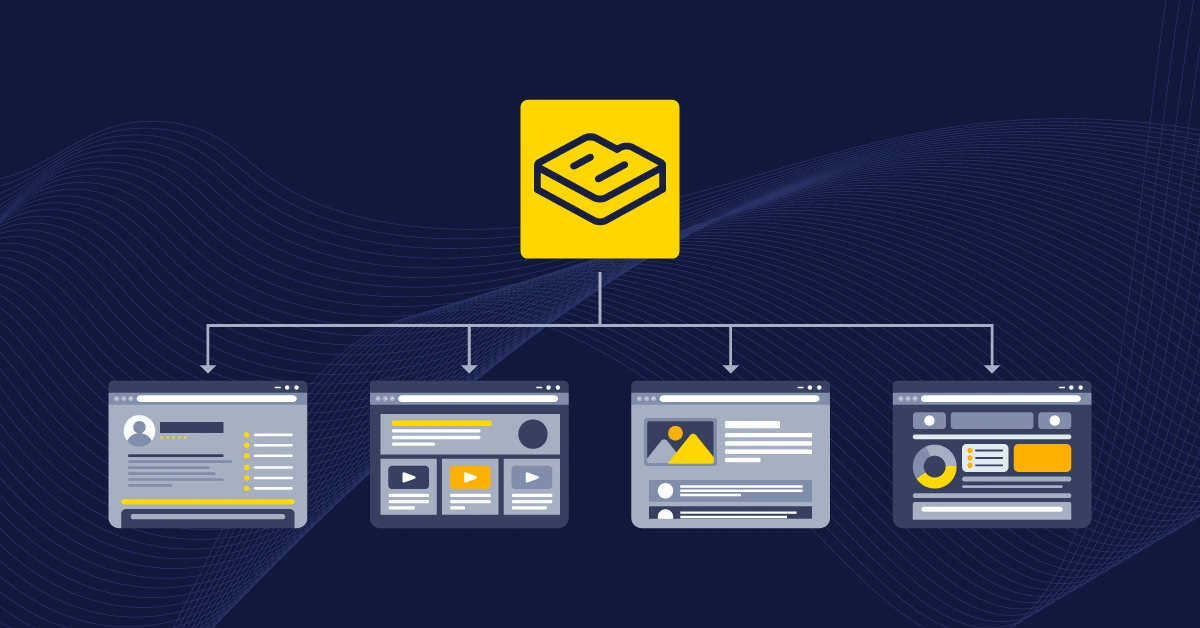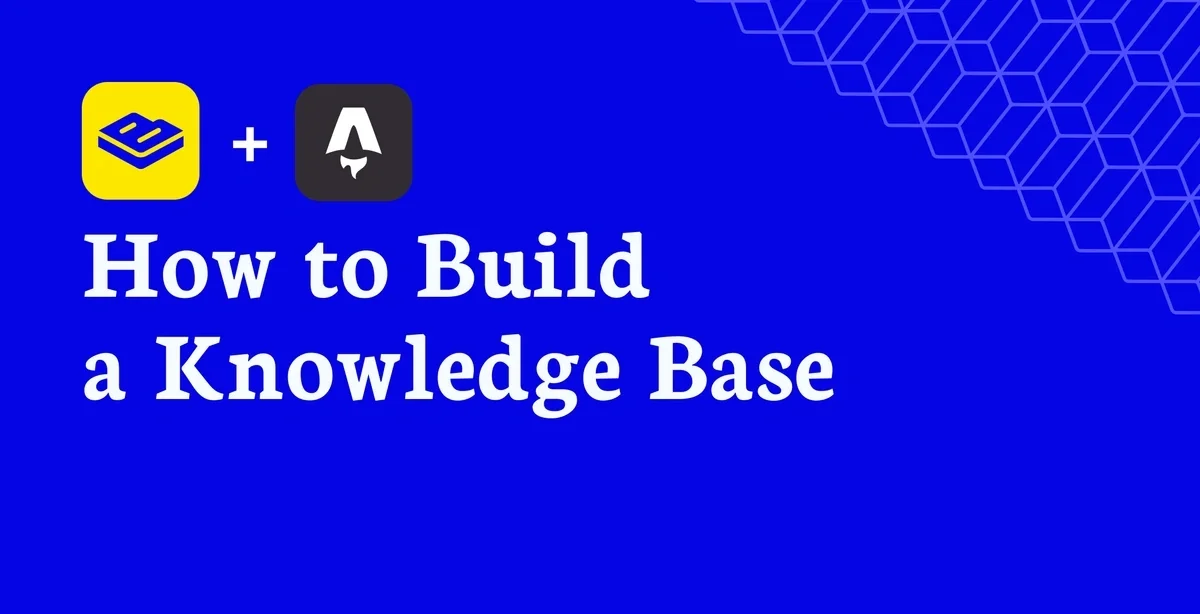Are you tired of managing a sprawling network of websites? Struggling to maintain consistency, streamline workflows, break down silos, and reduce costs across your ever-growing digital landscape? Large organizations know the pain: the complexity, the inefficiency, and the frustration that comes with managing multiple sites, especially without a centralized platform to manage them all.
But the challenges don’t stop at websites, do they? Today's consumer demands a consistent brand experience across all channels. Whether they’re interacting with your brand on different websites, mobile apps, or even social media, they expect uniformity.
To tackle this multi-dimensional complexity, you need a multisite CMS. It’s a modern CMS specifically engineered to handle the unique demands of large and growing multi-site environments. Today’s post will be your one-stop guide to understanding and adopting a multisite CMS.
What is a multisite CMS?
A multisite CMS is a specialized platform that simplifies managing and coordinating multiple websites within a single interface. Unlike traditional, single-site CMSs, which can only manage one site per deployment, a multisite CMS is designed to handle a growing network of sites.
A multisite CMS offers both uniformity and flexibility. With it, you are able to apply global changes – such as brand guidelines, security updates, or design tweaks – across all your sites, but you can also customize individual sites.
This means you can tailor each site to its specific audience, offering different languages, branding, content layouts, or functionalities where needed while maintaining control from a single platform. Such a setup is particularly beneficial for organizations that manage multiple brands, regional offices, or subsidiaries.
How a multisite CMS works
Architecturally speaking, a multisite CMS requires a single installation and deployment to manage all of your websites. This is a stark contrast to traditional CMSs, which need separate installations, databases, and admin panels for each site. The centralized approach of a multisite solution not only reduces costs but also simplifies maintenance and scalability.
To use a multisite CMS, a user starts by provisioning individual websites from the dashboard. During this process, they may specify domain names, set up site-specific configurations, create desired locales, and assign appropriate permissions to different users. Once a new website is created, content managers can use the CMS’s interface to create, edit, and publish content specific to that site.
An example of a multisite CMS is ButterCMS. It’s a headless CMS that lets you create and manage multiple sites and environments from a centralized dashboard. You can create different content models, locales, and user roles for each site/environment.

Benefits of using a multisite CMS for large organizations
If you have been using a traditional CMS to manage multiple sites, migrating to a multisite solution can completely revolutionize your content management. Here are some benefits you can expect:
Streamlined website management
Teams can work independently on different websites while maintaining a centralized governance structure. Content changes, security patches, policy updates, and other organization-level tweaks are implemented consistently across all sites. This reduces the risk of errors and makes the process far more manageable.
Consistent branding across all websites
A multi site CMS takes all the hassle out of consistent branding. In addition to applying general changes across all your sites, you can easily localize content or customize the content models for individual sites, without sacrificing your brand identity. These customization options ensure that each site can meet its specific audience’s needs while staying true to the overall brand.
Improves content reusability
The best multisite CMS platforms also improve content reusability. Instead of recreating the same content for each site, you can reuse existing content across your network. This feature not only saves time and effort but also contributes to overall consistency in messaging.
For example, ButterCMS offers a migration feature that lets you migrate content and content schemas from one site to another. Here’s an example of how this can be useful: Let's say you are a marketing manager overseeing multiple e-commerce sites on ButterCMS. You want to use a product page you modeled on one website across your site network. Using a feature like ButterCMS's migration feature, you can easily migrate your product page schema from one site to another. With a traditional setup, you'd need to recreate this schema individually across all platforms.
Cost-effectiveness and efficiency
A multisite enterprise CMS is cost-effective, secure, and efficient. Resources such as hosting, security, and maintenance are shared across all sites, which reduces your attack surface and overall costs. Moreover, your content infrastructure becomes future-proof; adding new sites to your network doesn’t require a full-scale deployment – just a few simple steps to bring the new site into the fold.

When to consider a multisite CMS
Next, let’s look at a few scenarios where a multisite CMS would be the right choice:
You are managing multiple brands or subsidiaries
As we have already established, organizations with multiple brands or labels often struggle to maintain consistent branding and messaging across different websites. Coordinating marketing campaigns and content updates across all the brands/labels can be complex and error-prone. A multi-site CMS helps simplify this process and ensure a cohesive brand experience.
You are constantly expanding into new markets or regions
As a global business, you must localize content for different languages and cultures. You must also manage multiple websites to cater to regional differences, which can lead to increased complexity. A multisite CMS not only offers built-in localization but also allows you to easily replicate a website for new regions without starting from scratch.
You are preparing for growth
If you are planning to add new websites, brands, or regions to your digital ecosystem, you should certainly consider implementing a multisite CMS. Without one, you may face scalability challenges and incur heavy costs associated with managing separate website infrastructures.
You are regularly acquiring, merging, or partnering
Frequent acquisitions, mergers, or partnerships can lead to a complex digital landscape, with multiple websites, brands, and technologies to integrate. It may be hard to merge brand identities, consolidate content and digital assets, and deliver a seamless user experience. With a multisite CMS, these challenges can be avoided, as content management for all sites is centralized.
Key features to look for in a multisite CMS
While selecting a reliable CMS for multiple websites, prioritize these features:
Scalability and flexibility
A multisite CMS should be able to grow alongside your business, allowing you to freely provision new websites, brands, or regions without significant effort. It should also support the customization of individual sites, as needed.
Answer these questions:
-
Can I create multi-tenant architectures on this platform?
-
Is there a limit to the number of websites or environments that can be created?
-
Can the platform support different types of content and site structures within the same network?
-
Does the CMS architecture allow it to scale up if the traffic increases?
Security and compliance
With multiple sites under one umbrella, security becomes even more critical. The chosen multisite CMS should have state-of-the-art security features to protect all your sites and tools to help you stay compliant with regulations like GDPR or CCPA.
Answer these questions:
-
Does the CMS offer security features like encryption, authentication, firewalls, and automated backups?
-
How does the CMS handle data privacy and compliance with regulations?
-
Are security patches regularly applied?
-
If it is an open-source CMS, does it have a mature community that actively maintains it?

User permissions and role management
Managing who has access to what across a large network of sites is very important. It ensures that only authorized people have access to sensitive data. A multi-site content management system should offer advanced role-based access control features that allow you to define granular permissions for different team members. For example, with ButterCMS multisite admin, you can manage users across all your sites from one dashboard.
Answer these questions:
-
How granular are the user permissions and role management features?
-
Can I easily control who has access to specific sites or areas within the CMS?
-
Is it possible to create custom roles to match the specific needs of my organization?
Ease of use
A multisite content management system should be easy for all members of the digital team to use. The user interface should be clean and easy to navigate, APIs and client libraries should be available for easy integration, and ample customization avenues should be present.
Answer these questions:
-
How easy is it for non-technical team members to use the CMS?
-
Does the platform offer training or support to help my team get up to speed quickly?
-
How well-documented and flexible are the APIs?
Challenges of implementing a multisite CMS
Multi site content management offers undeniable advantages, but there are also some challenges that you may face during its implementation. Here are some examples:
Technical complexity
As with any multifaceted system, implementing a multisite CMS can be technically challenging, especially when setting up a scalable and future-proof foundation. Careful planning and specialized skills are required to ensure the underlying CMS architecture is robust enough to handle current and future needs. Technical teams may need to address issues like database management, server configurations, and on-demand scalability.
Solutions:
-
Work closely with experienced developers who understand the intricacies of multisite setups.
-
Invest time in thorough planning and testing to prevent further issues.
-
Consider using cloud-native solutions that offer on-demand scalability and adaptability. Kubernetes is a good example.
Initial setup and migration
During the initial setup, you may face challenges related to data integrity, SEO rankings, migrations, and downtime. For example, suppose you migrate 10,000+ articles to the new multisite CMS, but later discover that all image links are broken and require manual updates. Or during the initial setup, you make a breaking code change, which may lead to downtime.
Solutions:
-
Plan the migration process carefully, breaking it down into manageable phases.
-
Focus on platforms that provide built-in tools for migrating content.
-
Conduct pilot testing to identify and address potential issues before the full-scale migration.
-
Formulate and implement a backup plan in case things don't go as expected.
Content overload and management
As all the content and assets are consolidated within a single platform, you may encounter issues related to content overload. This can result in outdated, inconsistent, or duplicate content, defeating the entire purpose of moving to a CMS for multiple sites.
Solutions:
-
Establish clear guidelines and standards for content creation, approval, and publication.
-
Regularly audit content to identify and eliminate duplicates or outdated information.
-
Use automation tools to streamline content creation, approval, and publication processes.
How a headless CMS makes multi-site management easy
A headless CMS is a content management system that separates the backend (where content is created and stored) from the frontend (where content is presented to users). Here are a few reasons why a headless CMS is the ideal choice for multisite content management:
Traditional CMSs are just no longer viable
Traditional, monolithic CMSs struggle to manage multisite environments. Most of these CMSs only support a single website per deployment, requiring you to configure separate installations for each site. Moreover, they also tend to tie content to specific templates and frontends, limiting customizability.
Conversely, a multisite headless CMS is designed from the ground up to support multiple sites and endless customizability. As it’s a backend-only CMS, you can simultaneously integrate it with as many websites as needed.
For example, ButterCMS allows you to build a centralized content repository and use it to deliver content to multiple websites. It also offers built-in support for multi-site management.
API-first approach for easy development
A multisite headless CMS makes all content accessible through APIs. APIs make it easier for developers to build and manage multiple websites, as they can pull content from the CMS’s centralized repository and render it on any platform or device. Moreover, APIs make the CMS interoperable, i.e., it can integrate with virtually any third-party service. These advantages are among the reasons why APIs are expected to contribute $14.2 trillion to the global economy by 2027.
ButterCMS is a prime example of an API-first headless CMS. It exposes RESTful APIs, along with client libraries for different technologies to simplify integrations.
Ease of omnichannel content management
A headless CMS can act as a multisite CMS and a multichannel CMS. It lets you manage content for multiple channels beyond just websites. Whether it's mobile apps, digital signage, voice assistants, or any other digital platform, you can deliver consistent content across all your touchpoints. This is one of the reasons why approximately 63% of organizations use a headless CMS for content management.
This omnichannel approach ensures that your brand's message remains uniform, regardless of where or how your audience interacts with it.
To learn how you can choose the best CMS for your business check out these 10 tips we've put together to help you make the right decision.
Rewards Network: A successful multisite CMS implementation
Rewards Network, a leading restaurant promotion company with a portfolio of over 97,000 restaurants, struggled to manage their growing network of 14 partner websites. Even minor changes would have to go through a lengthy process involving multiple layers of approval, coding, QA, and development. They were spending four hours per change, on average.
As the company expanded, these challenges grew more significant. Seeking a solution, they opted for ButterCMS. Leveraging ButterCMS’s APIs and starter kits, the development team was able to integrate all 14 websites with the platform in about three weeks.

With ButterCMS's user-friendly WYSIWYG interface, the marketing team gained complete control over website content. They could now update copy, images, and other content across all sites, independently of developers. Through this streamlined approach, the Rewards Network team reduced content update time from hours to minutes.
Best practices for managing a multisite CMS
To ensure the success of your multisite content management venture, follow these best practices:
Start with a strategic implementation plan
Before you start the implementation, establish a clear strategy that outlines your goals and needs. Articulate the goals you want to achieve with your multisite CMS. For example, do you want to improve website performance, streamline content management, enhance customer experience, or all of the above?
Then, select a CMS that meets your current needs and is conducive for future growth. A headless CMS, for example, is ideal for managing a growing number of sites and channels.
Once you have chosen the right platform, formulate a detailed plan that covers all aspects of the CMS rollout, from initial setup to ongoing management. This plan should include timelines, resource allocation, and key milestones.
Schedule regular maintenance and perform timely updates
Ensure that your CMS and all associated components are updated timely to protect against vulnerabilities and ensure that you always have access to the latest feature set. If possible, automate the update process to reduce chances of error.
Moreover, use dedicated monitoring tools to track system performance and identify potential issues before they become bottlenecks and/or lead to downtime.
Craft and enforce a comprehensive content strategy
A well-defined content strategy can make multisite management a lot easier. This strategy should align with your business objectives and govern workflows related to content creation, approval workflows, and publication.
You should also establish guidelines that maintain consistent branding across all sites and allow for localized content tailored to specific markets or audiences. The guidelines should list the content quality, style, and compliance rules.
To boost productivity and streamline content production, leverage editorial calendars, content templates, and collaboration tools.
Provide ongoing training and accessible support
Invest in training and support so your team members can make the most of the multisite CMS. Ensure they are comfortable using the system and understand how to manage specific tasks within it. Offer ongoing support resources like documentation, FAQs, and dedicated support channels.
Enforce strong multiuser management practices
Set up a clear system for user roles and permissions to control access across all your sites. You can use the CMS’s built-in user roles features for this purpose. It will help maintain accountability, streamline management, and prevent unauthorized access to sensitive data.
Final thoughts
A multisite CMS is a specialized CMS that allows large organizations to manage content for all their sites from a single location. It helps ensure consistent branding across all websites, reduce maintenance costs, and improve content reusability.
If your organization manages multiple sites, consider transitioning to a multisite CMS to simplify operations and boost efficiency.







